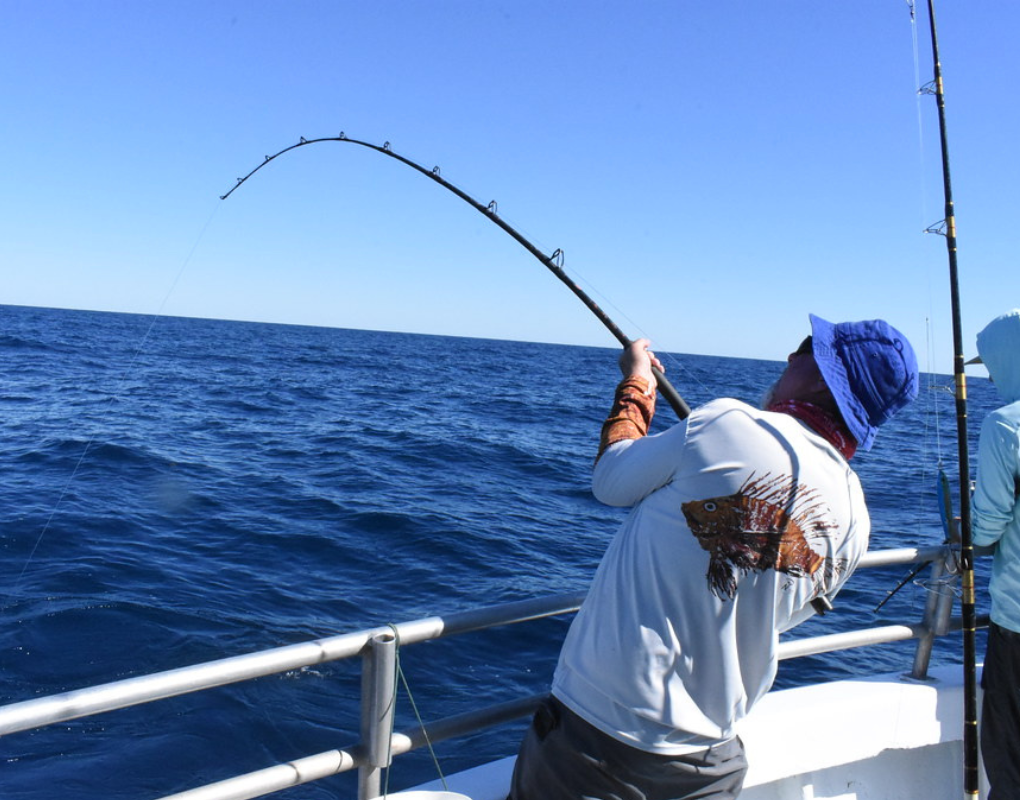Saltwater fishing techniques include trolling, bottom fishing, and casting. Each method targets specific species and requires different gear and baits.
Exploring saltwater fishing techniques reveals a world of adventure for anglarians of every level. Beginners and seasoned fishers alike employ various strategies to hook their desired catch. Trolling proves effective for large game fish, as it involves dragging baited lines behind a moving boat, enticing predators such as marlin and tuna.
Bottom fishing, on the other hand, targets dwellers of the deep like grouper and snapper, using weighted lines to sink baits to the ocean floor. For the more interactive angler, casting allows for precision and thrill as lures or live baits are thrown from shorelines, jetties, or boats, aiming for coastal species. Understanding these techniques enhances the fishing experience, improves success rates, and contributes to a sustainable fishing practice by targeting specific species without disrupting others.
The Lure Of Saltwater Fishing
Saltwater fishing offers unique thrills unlike its freshwater counterpart. Anglers worldwide cherish the unpredictable nature of the sea. This draws them to the coasts in search of their next big catch. The sheer variety of fish in the ocean promises exciting challenges for both novice and expert fishers alike.
Fishing in the saltwater environment tests skill, offering more diverse techniques and bigger rewards. Many appreciate the beauty and the vastness of the ocean, finding it greatly amplifies the fishing experience. It’s not just about landing a fish, but also about understanding. Becoming one with the ocean’s rhythm is key to success.
Essential Gear For Saltwater Anglers
Choosing the right rod for saltwater fishing is vital. Aim for durability and strength. Graphite rods are popular for their sensitivity and lighter weight. Fiberglass rods offer more toughness on a budget. Length and action depend on the targeted species. Short rods give more power for fighting fish. Longer rods improve casting distance.
Reels built for the sea must endure harsh saltwater conditions. Spinning reels are user-friendly and ideal for lightweight tackle. Conventional reels excel with heavier lines and deep-sea fishing. Choose corrosion-resistant material, such as anodized aluminum or stainless steel. Sealed bearings and drag systems are a must. They keep out salt and sand.
Tackle Talk: Best Bait And Lures
Fishers often debate between using live bait and artificial lures. The choice can greatly affect your success in saltwater fishing. Live bait, like minnows or shrimp, mimics real food, making them highly effective in attracting fish. Yet, they require proper handling and can be less convenient.
Artificial lures, on the other hand, are designed for reusability and versatility. Anglers find that lures such as plastic worms, jig heads, or spinnerbaits can target specific fish species. These options create vibrations and movements in the water, triggering bites from fish. Choosing between live bait and lures depends on target species, fishing conditions, and personal preference.
Casting Techniques For Success
Mastering the Overhead Cast begins with choosing the right tackle. A good selection can make a huge difference. Stand with your feet shoulder-width apart. Gripping the rod near the base provides better control. Allow plenty of line out – about the same length as the rod. Swing the rod tip up and back, then forward swiftly. Release the line at a 45-degree angle for optimal distance. Practice these steps until they feel smooth and natural.
The Art of Surf Casting requires patience and skill. Start by facing the water with your feet firm in the sand. Use a longer rod to increase your casting range. Timing the waves can help deliver your lure to the fish zone. Keep the wrist straight to avoid losing power in the cast. Reeling in slowly will keep the bait moving and attractive. Use these methods to enhance your saltwater fishing experience.
Boat Fishing Strategies
Trolling the Depths is a classic saltwater fishing technique involving a moving boat. Fishers use lines with diverse baits and lures. They aim to imitate injured prey, tempting fish to bite. This method requires specific gear such as trolling rods and reels. Pay attention to boat speed and lure depth. Both are key for successful trolling.
Anchoring Tactics for Hotspots involve finding abundant fishing areas. Use a GPS or fishfinder to locate spots with lots of fish. Once located, position your boat above these zones. Anchoring allows you to stay put and invite fish with tempting baits. Opt for live or scented baits that attract local species. Remember, silence and patience yield the best results.
Surf Fishing Secrets
Finding the perfect spot for surf fishing takes skill and knowledge. Beaches with natural structures, like sandbars, holes, and jetties, attract more fish. Using google earth or similar apps helps identify these features from above.
Timing in surf fishing is key. Fish follow the tides. High and low tides change fish locations. High tides may draw fish nearer to the shoreline. Low tides can reveal where fish may hide.
| High Tide | Low Tide |
| Fish closer to shore. | Reveal hiding spots. |
| Good for deeper water fish. | Good for beachcombing to find structures. |
Deep-sea Adventures
Deep-sea adventures demand knowledge of the ocean and its creatures. Big game fish like marlin, tuna, and sailfish require different techniques. For big catches, use trolling with lures or live bait. Make sure to match the bait size with the target species.
Navigating rough waters needs a sturdy boat and experience. Safety is paramount. Pay attention to weather forecasts. Make use of radar systems to steer clear of storms. Outfit your boat with essential safety equipment. Always wear a life jacket.
Jigging And Popping Techniques
Vertical Jigging makes use of a lead sinker with a hook molded into it. It sways left and right when jerked vertically. This fishing method is ideal for deep water.
Essential gear includes a short, strong rod and a narrow-spool reel. Anglers should use colorful jigs to attract fish. Specific rhythms of jig movement can lure different species.
Popping requires a popper lure, creating a splash to mimic injured fish. It’s thrilling as predators strike with visible force. Cast the popper and snap the rod tip periodically to make noise.
| Technique | Lure Type | Action |
| Vertical Jigging | Weighted Jig | Vertical Jerking |
| Popping | Popper | Surface Splashing |
Fly Fishing In Saltwater
Choosing the right fly is crucial for saltwater fly fishing. Bright colors often attract fish in clear waters, while darker flies work well in murky conditions. Local baitfish patterns can increase your chances of a good catch.
Mastering casting techniques ensures success in reaching fish. Practicing can make the process perfect. Short, sharp casts are ideal for accuracy. For distance, a smooth, longer stroke is essential. Both techniques need timing and rhythm.
Fishing Around Structures
Saltwater fishing near piers and jetties can be very fun and rewarding. These areas are hot spots for various fish. Fish like structures, where they find food and hide from predators. Use live bait and lures that mimic local fish to catch them. Drop your line close to the structures. But be careful not to snag your hook.
Exploring wrecks and reefs is another adventure. These places are home to big fish. Use heavy tackle here, as these fish are strong and will fight hard. GPS and fish finders can help locate the best spots. Remember, safety first. Always check local guidelines before fishing in these areas.
Knots Every Saltwater Angler Should Know
To land the biggest fish in saltwater, knowing the right knots is crucial. Sturdy knots ensure your line holds against heavy game. For these situations, the Palomar knot and the Improved Clinch knot are top choices. They provide high strength and are reliable under strain.
Changing lures or hooks quickly helps keep you ready for action. The Uni knot is preferred for its versatility and ease of tying. The Non-Slip Loop knot is also common for its quick tie ability while providing a strong, fixed loop. With practice, these knots can be tied swiftly, keeping your line in the water longer.
Safety Precautions And Tips
Before heading out to sea, always check the weather forecast. Sudden storms can make the sea dangerous. Have a reliable weather app or device on your boat. Tell someone on land where you’re going. Make sure to wear a life jacket at all times. It could be lifesaving if you happen to fall overboard. Stay aware of your surroundings and keep a lookout for other boats and obstacles. Always carry a safety kit with flares, a horn, and emergency supplies. Understand the signs of hypothermia and take immediate action if you or someone with you starts showing symptoms. Ensure you have a first-aid kit readily available for minor injuries. Lastly, know the limits of your boat and don’t take unnecessary risks in rough waters.
Regulations And Conservation
Knowing local fishing regulations protects our ocean life. Before you cast your line, check local fishing laws. These laws help maintain fish populations. Follow size limits, catch limits, and seasons strictly. Not only is this your legal duty, but it is also a moral one. By doing so, we ensure that future generations can also enjoy fishing. Sustainable fishing practices are vital for ocean health. Always practice catch and release whenever possible. Use environmentally friendly gear to minimize harm. Selective fishing methods prevent overfishing. Bycatch, catching unwanted fish, is also reduced. Your choices make a huge impact on maritime conservation efforts.
Learning From The Pros
Mastering the art of saltwater fishing demands knowledge and skill.
Guides such as “The Complete Book of Saltwater Fishing” by Milt Rosko offer insight into tackle, techniques, and fish behavior. The “Saltwater Fisherman’s Bible” by Erwin A. Bauer teaches essential skills for the sea.
Workshops led by seasoned anglers provide practical experience. Fishing tours allow for hands-on learning and pro-tips from the experts. Find these opportunities at local marinas or fishing clubs.
Frequently Asked Questions On Saltwater Fishing Techniques
What Is The Best Bait To Use In Saltwater?
The best saltwater bait includes live or cut bait like shrimp, squid, mullet, and crabs. Artificial lures and jigs also work effectively for various species.
How Do You Rig For Saltwater Fishing?
Select the appropriate rod, reel, and line combination for your target species. Use suitable bait and tackle, such as hooks, lures, or rigs specific to the fish. Set the drag correctly on your reel to prevent line breakage. Cast your line to areas where fish are likely to feed.
How Do You Catch Big Saltwater Fish?
To catch big saltwater fish, use heavy-duty gear suited for the species. Research ideal bait for your target fish. Implement strategic casting techniques and optimal trolling speeds. Maintain patience, and when you hook a fish, apply consistent pressure to reel it in successfully.
How Do You Fish From The Shore In Saltwater?
Choose the right tackle to match the fish species you’re targeting. Cast your line to areas where fish likely gather, such as near structures or where waves break. Use suitable bait or lures that attract local fish, and always check tide conditions for optimal fishing times.
Conclusion
Embarking on your next saltwater fishing adventure just got easier. The techniques we’ve explored are your ticket to success on the high seas. From jigging to trolling, mastery awaits with practice and patience. Cast with confidence, embrace the challenge, and let the thrill of the catch be your guide.
Remember, every tide brings new possibilities. Happy fishing!

